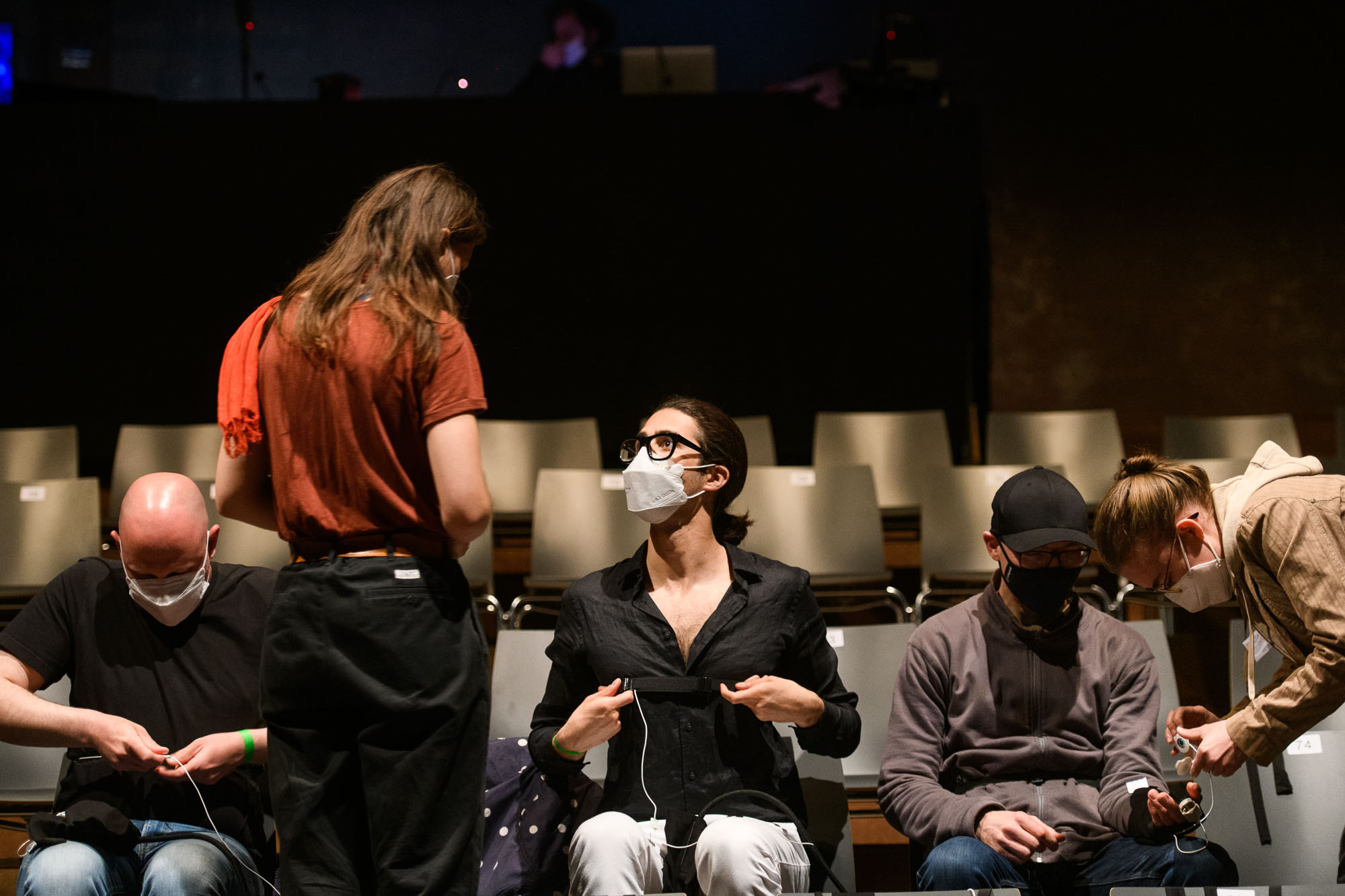Nothing feels quite like the shared experience of hearing live music in a room full of other people. But new research is demonstrating how that experience may go far beyond how we feel, by showing how physiological processes can sync up across audience members at a classical music concert.
The study, led by Wolfgang Tschacher from the University of Bern in Switzerland, analyzed 132 audience members across three concerts given by string quintets in Berlin, Germany. The repertoire was the same across all the concerts: Beethoven’s Op. 104 in C minor, a piece called Epitaphs by contemporary Australian composer Brett Dean, and Johannes Brahms’ Op. 111 in G major. Each piece represents a different musical style.
Before and after each concert, the participants were asked to complete questionnaires about their personality traits and mood. During the performance, they wore wearable sensors to measure their heart rate, breathing, and the electrical conductivity of their skin, which is a measure of excitement.
As well as this, the researchers had cameras trained on the audience from above to monitor the participants’ movements.

Audience members get prepped for the concert by having wearable sensors attached to them.
Image credit: © Foto Phil Dera
The hypothesis was that all of these physiological parameters would synchronize across the participants as they experienced the music, and that there would be some association with the listeners’ personality traits. This kind of synchronization has been observed in humans during social interactions, and previous research had hinted that listening to music would have the same effect, but this was one of the first projects to study this effect specifically in concert audiences.
In their paper, the authors write that “substantial evidence of physiological and movement synchrony between audience members was found.” The greatest level of synchronization was in breathing rates, although all of the physiological parameters were affected apart from patterns of inhaling and exhaling. Body movements were also synchronized, despite the fact that the audience members were seated in dimmed lighting and distanced from each other due to COVID protocols in place at the time.
When they looked at the personality questionnaire date, the team found that those who scored more highly for agreeableness or openness were more likely to become synchronized with their fellow audience members, while the opposite was true for those with more neurotic or extroverted traits. This makes sense when you consider that traits of agreeableness and openness are often associated with people who are sociable and trusting of others.
The authors suggested that extroverted people could be placing more emphasis on the social experience of being with people, rather than the music itself, possibly explaining why they were less likely to synchronize.
There were some limitations to the data collection because the researchers prioritized comfort over the quality of the information gathered – a fair trade-off since the participants had to sit through an entire concert wearing a selection of sensors. However, the authors do note that this compromised some of the data, particularly that of heart rate. They suggest that future research could partially correct these issues with more careful placement of the wearables.
Music has long been an essential feature of humanity. It evokes memories; it can change the physical structure of our brains; and although tales of it leading to madness are apocryphal, it can certainly transport us to another time and place. When we experience music alongside other people, its effects are magnified and shared – as this research demonstrates, at least for some of us, in a very real way.
The study is published in the journal Scientific Reports.
Source Link: Audience Members At Classical Music Gigs Can Physically Sync Up